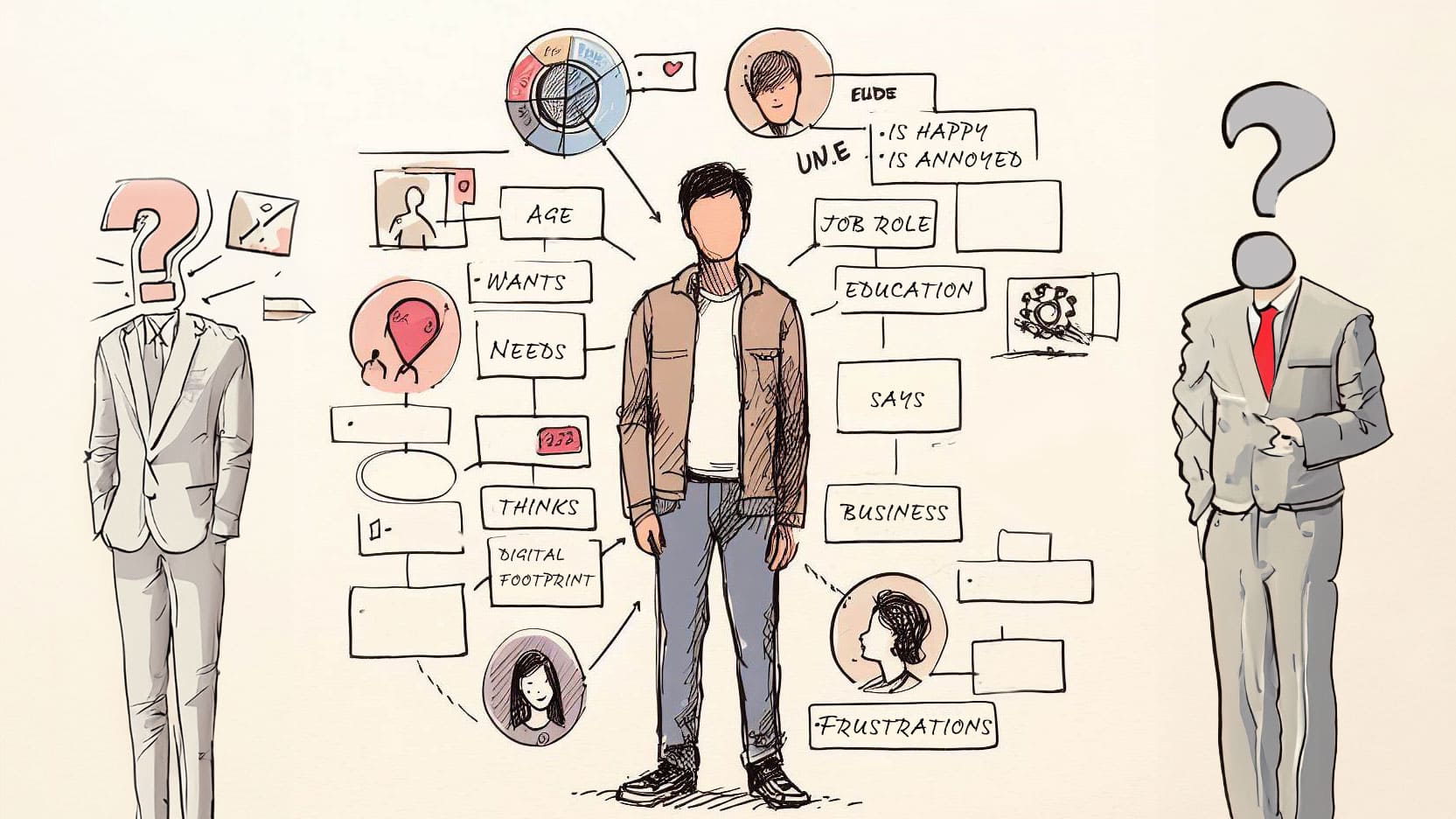B2B empathy: humanising business complexity
14th November 2023 •
14th November 2023 •

To design effective user experiences, we need to understand and empathise with the people who are going to interact with our products and services. This is even more so in the Business to Business (B2B) world.
The people in question are usually in specialist and niche roles that are quite unlike our own. We are not only designing for us; we are designing for them. Their needs and expectations should be at the heart of the process, their voice present at critical decision points.
It’s quite common for us not to have access to these people throughout the project. Clients will fill this gap and provide us the insight we need, but to better overcome this problem, we refer to representative personas, scenarios, and customer journey maps. These present us with an accurate picture of real people – their objectives, their needs, expectations, and pain points.
Through these artefacts we understand who the users are, what they do, the pressures of their life situation, their motivations, preferences. We can predict how they feel, what they say and what they do when engaging with the products and services we design. We can identify potential issues and opportunities by role playing as the users, and we become the person we are designing for and see where words, images, video, and interactivity delight or bewilder.
By keeping real users at the forefront of the design process we effectively quality assure what we are doing, keeping a good level of subjectivity, removing as much of our own bias from the equation.
UX personas typically include as much relevant detail about a person as possible. For example,
For each person represented by a persona we can ask questions about our designs such as:
“What would they think at this point?”
“Would they understand what we are saying here?”
“How would they feel about this?”
“What would they do next?”
Well we ask the project stakeholders to validate, agree and sign-off the personas and scenarios as a robust and representative source of truth that will provide a guiding light throughout the life of the project. Then to check we have what we need, we ask ourselves
If the answer is ‘no’ to any of these questions, then there is more discovery to be done!
Within the complex world of Business to Business (B2B) it’s all too easy to forget the people we are really designing for – the end user. By taking the time to understand and empathise with users we ensure that we continue to humanise business complexity and create compelling and usable systems.

Luckily for our clients, Torpedo knows more than a thing or two about this. Our talented team have a wealth of knowledge and experience when it comes to B2B empathy. Give us a call when you’re ready to know more.
Get in touch